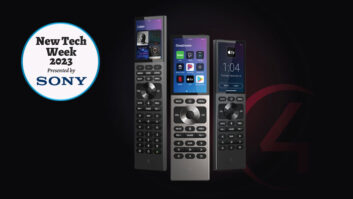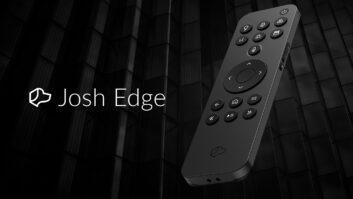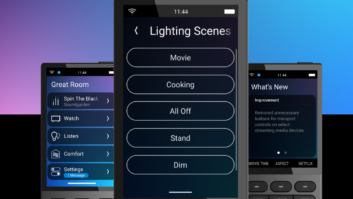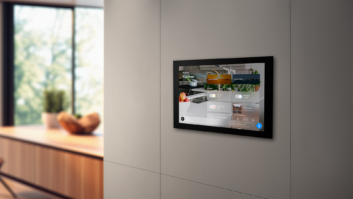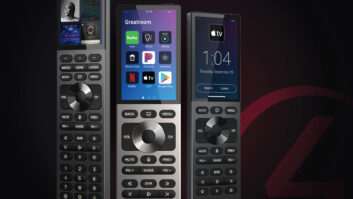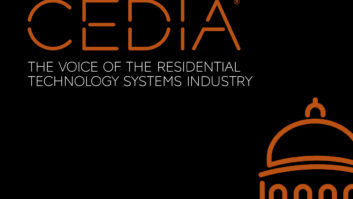As many of you may know, Crestron is releasing new remote controls this month. I have been fortunate enough to be testing them since the Alpha stage through to product release. Not only have I been using them at home, but I have put them in front of designers we work with, as well as friends and family. I even took them to my church and pigeonholed some other parishioners after services to ask what they thought (they are kind of used to this at this point!). This has led me to think in depth about the place of the universal remote in our projects and how critical it is.

Our customers want everything to be easy, but they also want it to be beautiful. Typically, the conversation with the customer begins with them stating they want to use their phone or tablet as their remote. Once I explain to them the drawbacks and the fact that virtually every client who has started down that path has purchased a handheld remote within two months, they realize the benefit of a tactile experience. Muscle memory is critical to the user. Being able to feel the buttons and use the remote in a dark room and without looking down is highly underrated. Clients often do not realize how important this is until it is brought to their attention, and they think about. I have had numerous clients tell me that they went home and paid attention to how they use their current remotes and realized that they never look at them, and how important that is to them. That seals the deal right there for a handheld, wand-style remote.
The new Crestron remotes are the first remotes that I have shown to designers where they have said they would be happy to have them out on the coffee table. Most other remotes are a necessary evil to them. Essentially the segment of the market that wants something sleek, easy to use, and aesthetically pleasing. Some remotes get close, but move too many functions to a touchscreen, diminishing the entire purpose of tactile device. Other remotes offer equally strong aesthetics but eliminate the hard-button numeric keypad and are limited to one-room solutions. Some remotes on the market feature the option to create soft buttons for features that do not have a hard button; this workaround is helpful, but many clients end up missing the muscle memory and tactile feel of hard buttons. Looking down at a screen is simply inconvenient and distracting every time you want to change the volume, pause, fast forward or doing something else that is very easy to do on a traditional remote.
There is a segment of the market that either does not value a universal remote or does not have the budget to put one into five different rooms. While these are not our clientele, our friends at Home Theater Advisors have plenty of these clients in the middle market. They often have just a cable box and a smart TV and maybe a soundbar for better audio, or a Sonos PlayBar for TV audio and music. In this case, they will likely only have two remotes—the cable remote for TV watching and the TV remote for streaming services—so a universal remote may not make sense. In all honesty, if they are not using any other smart home features (lighting, shading, etc.) and therefore would not need a control processor, I agree that a universal remote may not be in their best interest in this situation. All they need is for us to lend our expertise to the prewire, provide a rock solid network, install the AV gear and wiring at each TV location, and put in an IR repeater. One advantage of this setup is that there are way fewer service calls. Typically when the client is holding the cable company remote and the cable TV doesn’t work, they blame their cable provider, not the integrator, and so they call the cable provider first.
No matter which path your clients follow—universal remotes or OEM remotes—it is important to keep the experience consistent throughout the home. Do not sell them the high-end remote for the main living room and then the budget remote for the bedrooms and other secondary rooms, or put a universal remote in only one or two rooms but use the cable remote in others, as this will negate the benefits of muscle memory. I used to have Crestron remotes in most of my home, but a standard cable TV remote in my son’s room. It was awful. If I was in my son’s room watching TV with him, I had to think about which remote I was holding every time I pushed a button. And it was worse for him, because he was using different remotes more frequently. I quickly added an HR150 to his room.
Going back to the new Crestron remotes, I am such a fan that I have placed an order for 30 of them to program and give to existing customers on a trial basis, knowing how much they will love them and will want to upgrade from their existing HR150s.
Also, an interesting idea came up during my informal product testing with friends and family. More than a few suggested selling accessories for the remotes. Things like color cases, or color change kits to personalize the remotes, as well as protective cases, much like there are for mobile phones. I find the idea intriguing, as it would make the remotes more personal and would provide another revenue stream, especially as some clients may purchase multiple assorted colors. What do you all think about having accessories for remotes? Is that something we should be pushing our manufacturers for?
